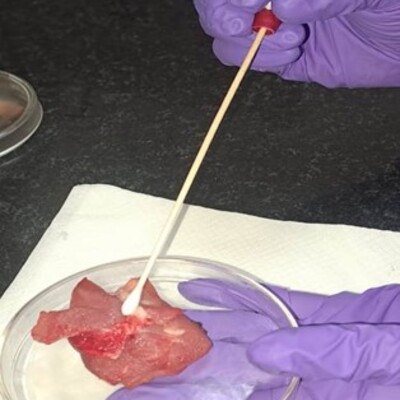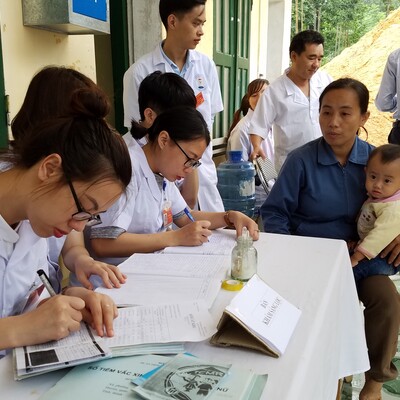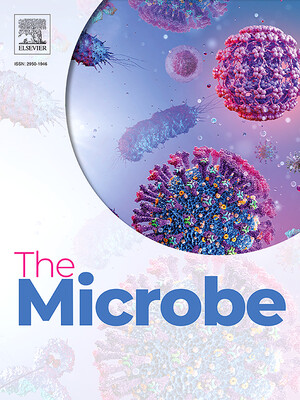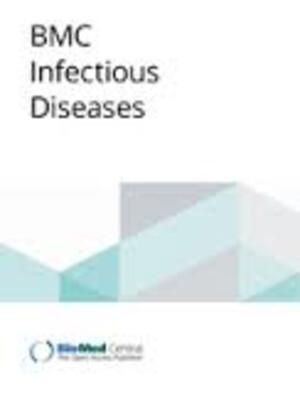
Tackling ‘rational’ antibiotic use in agriculture to slow the spread of antimicrobial resistance
Original blog post by Ivo Syndicus
Recent findings by the One Health Poultry Hub were discussed at an international workshop in Uganda, and support an integrated antibiotic stewardship framework which understands why farmers make the decisions they do.
A major challenge for tackling excessive and inappropriate use of antibiotics in agriculture is understanding and addressing how these drugs are accessed. The sale of antibiotics is often insufficiently regulated and existing restrictions may just as well be hard to enforce.
This is especially the case in places with limited healthcare and veterinary services where people rely on informal providers. Operators of drug stores and other informal providers that are not supposed to sell antibiotics are less likely to know about appropriate use of antibiotics and the risks and dangers of antimicrobial resistance (AMR).
Similarly, farmers can easily see the apparent benefits of using antibiotics – for treatment, prophylaxis or growth promotion in their livestock – but are often unaware of the risks. The combination of easy access to antibiotics and limited knowledge of providers and farmers of the associated risks has normalised antibiotics use and creates the perfect conditions to breed antimicrobial resistance.
This is of critical importance because a major concern for the increase of AMR is the use of antibiotics in agriculture. The World Health Organization has declared AMR as one the top 10 global public health threats.
Workshop findings from Uganda:
• Veterinary drug stores sell several supplementary vitamin products for poultry that contain antibiotics. Some of these products contain colistin, a last-resort antibiotic in human medicine whose ban in feed additives is urgently called for following the emergence of resistance in food animals.
• While veterinary drug stores are concentrated in towns, more rural locations tend to only have smaller human drug stores. These do not stock veterinary products and are neither supposed to sell antibiotics (a service formally limited to pharmacies). They do, however, frequently sell antibiotics ‘under the counter’ (i.e., informally). Further, farmers do purchase these antibiotics to treat their livestock (a form of off-label ‘crossover-use’). Delegates reported that similar practices were commonly seen in other countries too.
Read the full blog post here…
The AMR component under the ILRI-led project “Boosting Uganda’s Investment in Livestock Development” (BUILD) contributed to the workshop by presenting findings and observations from their work in the Ugandan poultry value chain. These findings align with the observations made by the One Health Poultry Hub. The BUILD project has just completed a cross-sectional study at 400 poultry farms in peri-urban Wakiso and rural Soroti in Uganda, using a data collection tool on antimicrobial use in livestock production (AMUSE) and collecting samples to assess dimensions of AMR in the farms in selected bacteria, namely Enterococcus, Escherichia coli and Salmonella species.
Preliminary findings show that antimicrobial use is higher in the rural areas, which was a surprising result. In rural Soroti, farmers heavily rely on human drugs because veterinarians and agrovet stores are not accessible. In the absence of access to proper veterinary services (KAP study VSFG), poultry farmers also learn a lot by mimicking neighboring farms, and learning by trial-and-error. This also makes them vulnerable to fraudulent practices such as the purchase of fake vaccines and leaves them frustrated when their chickens still die of Newcastle disease. As a result they use antibiotics and other drugs which they perceive to be effective in humans, so they must be working in their animals too. Previous work in Uganda found, for instance, that pig and poultry farmers use antiretrovirals - which are normally used to treat peopel living with HIV– because they feel;
“if these drugs cure HIV, they must be effective in protecting our animals from African swine fever and Newcastle disease”.
On top of it, they seem to have a growth promoting effect (Ndoboli et al., 2021).
Watch a video on AMR attitudes, knowledge and practices in Ugandan society by BUILD partner Vétérinaires Sans Frontières - Germany (VSF-G).




















